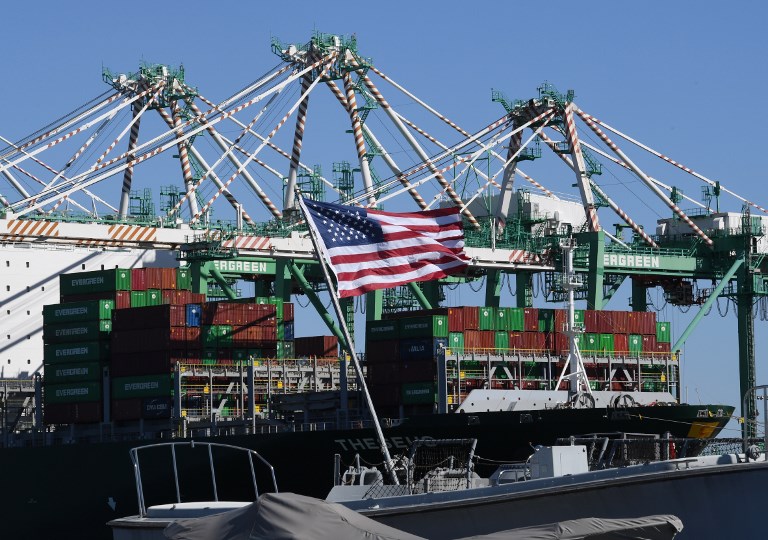
by Ryan MCMORROW
BEIJING, China (AFP) — The United States and China open the latest round of their trade talks Thursday as the economic superpowers edge towards a deal to resolve a months-long spat that has rattled the global economy.
The two-day meetings between US Trade Representative Robert Lighthizer and Treasury Secretary Steven Mnuchin with China’s top economic official Liu He is the first since China put into law new measures seen as an olive branch in their high-stakes stand-off.
However, while US President Donald Trump has voiced hope that he could soon hold a signing ceremony with his Chinese counterpart Xi Jinping, negotiations have dragged on, suggesting substantial differences remain.
Global markets have rallied for much of this year on growing optimism the two sides will eventually reach an agreement.
But Lighthizer sought to play down expectations ahead of the meeting in Beijing, which is due to be followed by more talks in Washington in early April.
“I’m hoping but not necessarily hopeful… If there’s a great deal to be gotten, we’ll get it — if not, we’ll find another plan,” he told National Public Radio earlier this week.
The two sides have slapped tariffs on hundreds of billions of dollars of goods since last year, hitting a slew of businesses ranging from manufacturers to farmers in both countries, with knock-on effects for other economies.
Trump suggested last week some of those tariffs should stay in place after a deal is reached to ensure China follows through.
Beijing has taken steps to address some US complaints.
Earlier this month China’s rubber-stamp parliament rushed through a law that seeks to protect foreign firms from the forced transfer of technology.
And Premier Li Keqiang pledged a step up of punishment for intellectual property infringers to “ensure violators have no place to hide”, addressing a major bone of contention in Washington.
“The kinds of things that we’re asking for are not anti-Chinese at all,” Lighthizer said on NPR. “Protection of intellectual property is not anti-Chinese. Stopping people from forcing transfer of technology is not anti-Chinese.
“In fact, the reformers would say it’s pro-Chinese. It will help their economy, not hurt their economy.”
Remaining differences
Negotiators hope to iron out remaining differences on other issues including Beijing’s subsidies to state-owned firms and policies to build up Chinese firms in strategic sectors.
“In our conversations with the US government they’ve indicated that subsidies which create an uneven playing field between foreign and domestic companies are most definitely something that continues to be negotiated,” said Jacob Parker, vice president of the US-China Business Council.
“I suspect this is one of the areas China is pushing back on, (and) it remains a core of the negotiations,” Parker said.
Beijing made no mention of its controversial Made in China 2025 industrial policy — which had called for Chinese firms to take control of many strategic industries — when Li laid out policy plans for the year.
Still analysts say Beijing’s push for self-reliance and indigenous innovation will continue in practice.
Foreign tech companies have also long been locked out of China’s market with many services such as Google, Facebook and Amazon blocked or facing restrictions.
Beijing has yet to give in to demands it allow greater market access to foreign cloud computing providers or loosen restrictions on overseas data transfer, the Financial Times reported this week.
At a recent forum on the issue, Chinese academics and bureaucrats criticised related US policies.
“China does not trust the US government… we don’t believe that once our data is in America, the US government will handle it appropriately,” said Xu Chengjin of the Ministry of Industry and Information Technology.
American lawmakers and regulators have expressed similar concern about sharing US data with Chinese firms.
Enforcement
The two sides also need to resolve when to remove the punitive tariffs on billions of dollars’ worth of goods and how to enforce any deal.
“The question will be the details and enforceability,” Lighthizer said, outlining a mechanism for US companies facing problems in China to bring cases to the US Trade Representative to discuss with its Chinese counterparts.
“They’re committed to do this, but it’s going to be a question of whether they can get all the layers of government, I think, to follow through,” he said.
Trump said last week he wanted to keep the current 25 percent duties on a $50 billion tranche of Chinese imports, adding “we need that”.
© Agence France-Presse







